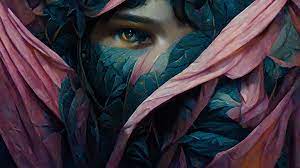Artificial Intelligence (AI) is reshaping the landscape of modern art, introducing innovative techniques and transforming artistic expression. AI image style transfer is a significant development in this field, which has become a pivotal tool in contemporary art creation.
Revolutionizing Artistic Creation
AI in modern art is revolutionizing the way artists create. By using AI image style transfer, artists can combine different styles and elements from various art periods or their works to create something entirely new. This technology uses algorithms to analyze the styles of existing artworks and apply them to new creations, allowing for a fusion of traditional and contemporary art styles.
This blend of styles can lead to the creation of unique and previously unimaginable artworks. Artists are no longer confined to the limitations of traditional mediums; instead, they can explore a vast array of visual possibilities, leading to the creation of innovative and boundary-pushing art.
Enhancing Creativity and Exploration
AI in art opens up new avenues for creativity and exploration. Artists can experiment with different styles, textures, and colors in ways that were not possible before. AI algorithms can suggest new combinations and variations, inspiring artists to explore uncharted territories in their creative journey.
These technologies also democratize art creation, making it more accessible to those without formal art training. Amateurs can use AI tools to express their creativity, explore different art styles, and develop their artistic skills. This accessibility broadens the scope of who can create art, leading to a more diverse and inclusive art world.
Personalizing Art Experiences
AI is personalizing art experiences for both creators and viewers. Through AI image style transfer, artists can create works that resonate more deeply with individual preferences and cultural backgrounds. This personalization also extends to art viewers; AI can tailor art experiences to individual tastes, enhancing engagement and appreciation.
For instance, AI can analyze a viewer’s past interactions with art and suggest artworks that align with their preferences. This personalized approach can make art more relatable and enjoyable, potentially attracting a wider audience to the art world.
Transforming Art Education and Appreciation
AI is also transforming art education and appreciation. Educational institutions use AI tools to teach art history and creation, offering students hands-on experience with cutting-edge technology. Integrating AI in art education gives students a broader understanding of traditional and modern art techniques.
Moreover, AI tools can help art enthusiasts and students analyze and understand complex artworks. By breaking down the styles and techniques used in a piece, AI can enhance art appreciation, making it more approachable and understandable to a wider audience.
Future of Artistic Expression
The future of artistic expression with AI looks promising. As AI technology continues to evolve, so will its applications in art. We can expect more sophisticated and advanced tools that offer even greater possibilities for creativity and personalization.
Integrating AI in art is leading to a new era of artistic expression, where technology and creativity merge to create unprecedented art forms. This evolution is changing how art is made and how it is perceived, experienced, and appreciated.
With Adobe, “Upload your image to generate images in your unique style. Or apply a style reference from the curated gallery, which includes dozens of options in several categories, including Watercolor, Pencil, 3D, Neon, Landscapes, Texture, and more.”
AI image style transfer and other AI-driven techniques are significantly influencing modern art. They are opening up new possibilities for artistic creation, enhancing creativity, personalizing art experiences, transforming education, and shaping the future of artistic expression. As AI evolves, its impact on art will grow, leading to more innovative and captivating artistic endeavors.






